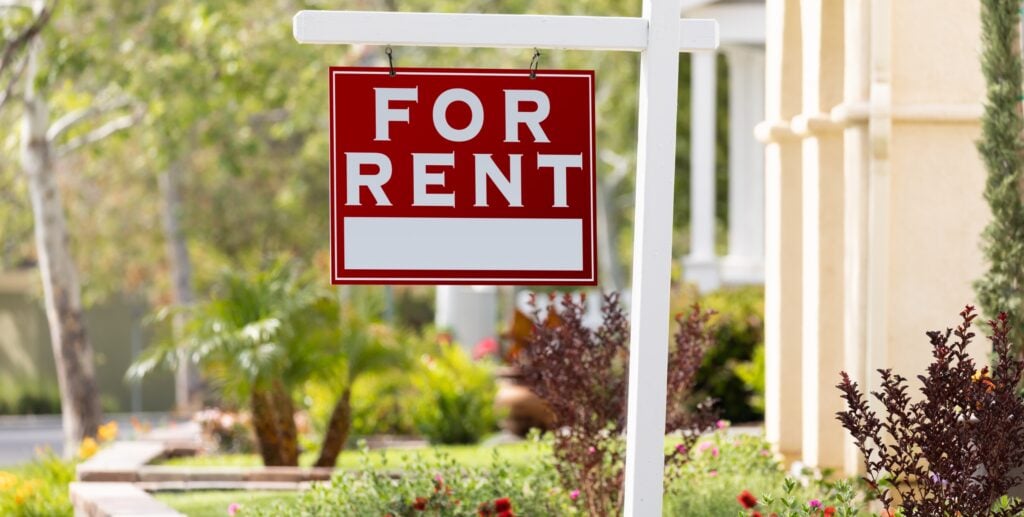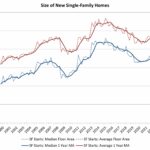Zillow’s July rental report shows an increased turn toward affordability in some U.S. cities. A construction boom is bringing new units to market, increasing supply and forcing landlords to incentivize tenants.
In the rental roller coaster of the last few years, the latest news will be welcome for prospective tenants, even though rents have continued to rise from a year ago and have remained on an upward trajectory in many markets.
More Concessions and a Construction Boom
The concessions offered by a third of property managers, such as one month’s free or half-priced rent and free parking, will help tenants in softening markets get over the initial hump of finding the money for moving, a security deposit, and rent.
In its report, Zillow stated that June saw more multifamily units completed than any month in nearly half a century, creating options for cash-starved tenants. RentCafe ratified Zillow’s findings, stating that developers are on track to complete a massive, record 518,108 rental units by the end of 2024, marking a 9% increase year over year and a 30% increase over 2022.
Zillow stats show that the typical U.S. rent rose 0.4% in July to $2,070. This was marginally down from 0.5% growth in June and 0.6% growth in April and May. Annual rent growth hit the brakes, too, with rents up 3.4% year over year, compared to 3.5% year-over-year growth in June.
Increased Affordability
These fine margins of decreasing growth have tipped the affordability scales, with tenants now on the right side of the cost-burdened threshold, meaning they are paying just under 30% of their monthly income on rent.
Property managers have responded accordingly, with 33.2% of national rental listings on Zillow offering a concession in July, up from 25.4% last year. In the Sunbelt, where much of the construction has occurred, the concessions were even higher—the sole exception being Salt Lake City, which is not in the Sunbelt—with over 50% of Zillow listings offering concessions in the following cities:
However, nationally, the rental market is in flux. Four metros have a smaller share of concession-induced listings than last year. These are:
A Diverse National Market Shows Affordability Issues Remain
A recent New York Times article offered insight into the wide-ranging rental market, stating: “Many tenants are paying rents negotiated earlier in the housing cycle, and the new construction has been concentrated in the luxury market, which doesn’t do much to help middle- or lower-income renters, at least in the short term.”
A recent Wall Street Journal article stated that rents are expected to rise throughout 2024 in Northeast and Midwest cities, such as Kansas City, Missouri, and Washington, D.C., with no letup in sight. Overall, however, the rental outlook is more encouraging for tenants than it was a year ago, as shown by the Zillow Observed Renter Demand Index, a measure of rental market tightness, which has fallen by 23.3% since last July—no doubt down to the massive numbers of new rentals hitting the market. Increasing supply has created a healthier rental ecosystem, manifesting across various markets as developments are completed.
How an Interest Rate Drop Will Affect Rentals
As interest rates drop, the rental market will likely soften more as more renters can afford to buy houses. However, calling workers back to the office on a full-time or hybrid basis will also play a part, causing employees to drop the remote work/rental lifestyle.
The cost of construction will also affect rental prices. Developers locked into higher rates could focus on less risky projects in areas with high rental demand and strong job growth.
Doug Ressler, senior analyst and manager of business intelligence at Yardi Matrix, told RentCafe:
“The overall impact on the number of developers might vary by region. In places like Texas, for instance, the demand for apartments remains robust due to factors like corporate migration and high home prices. On the other hand, some markets are seeing a slowdown in new construction starts due to the economic environment.”
Some Standout Stats From the Recent Zillow Report
Rents
Single-family rents
- Typical single-family is $2,294 as of July, up 0.4% month over month.
- Single-family rents are now up 4.7% from last year.
- Single-family rents have increased by 40.1% since the start of the pandemic.
- Only two metro markets—Milwaukee (-0.7%) and Austin (-0.02%)—saw rents fall monthly.
- Single-family rents are up from year-ago levels in 49 of the 50 largest metro areas.
- Annual single-family rent increases are highest in Cleveland (8.6%), Cincinnati (7.8%), Indianapolis (7.5%), Columbus, Ohio (7.2%) and Louisville (7.2%).
Multifamily rents
- As of July, the typical U.S. asking rent for an apartment in a multifamily building is $1,916, up 0.4% month over month.
- Rents are up 2.6% from last year.
- Rents have increased 27.3% since the start of the pandemic
- Multifamily rents were down in these Sunbelt cities on a monthly basis: Austin (-0.3%), Phoenix (-0.2%), San Antonio, Texas (-0.1%), Jacksonville, Florida (-0.1%) and Las Vegas (-0.02%)
- Multifamily apartment rents are up in 40 of the 50 largest metro areas, with the largest increases in growing small cities: Hartford (8.3%), Providence (7%), Cleveland (6.5%), Louisville (6.2%), and Richmond (5.1%).
Rent affordability
- Although the median household spends 30% of its income on rent, an important cost burden metric, it is still up from 28.6% pre-pandemic levels.
- The most affordable rental metro areas are Minneapolis (20.2% of median income spent on a new rental), Salt Lake City (20.3%), St. Louis (20.6%), Austin (21%), and Raleigh (21.2%).
- The least affordable rental metro areas are Miami (42.9% of median income spent on a typical new rental), New York (42%), Los Angeles (37.4%), San Diego (34.1%), and Riverside, California (33.8%).
- The income needed to comfortably afford the typical U.S. rent, spending no more than 30% of annual income on rent, is $82,795.
Final Thoughts
Any rental market softening is good news for tenants compared to the last few years. However, the lens must be widened for a more accurate picture. Rents have increased by a meteoric 27% to 40% across all property types since the start of the pandemic. Wages, though greater too, have not managed to keep pace with rents, especially when other living expenses such as food and energy are factored in.
Thus, there is still a chronic affordability issue across much of America, particularly in the Northeast and parts of the Midwest, where rental inventory remains low or high-priced. As seen in the Sunbelt (it’s happening too in NYC, but it is a very expensive city to begin with), a building bonanza is still needed in other parts of the U.S. Therefore, investors offering affordable housing in these areas will find endless demand.
Ready to succeed in real estate investing? Create a free BiggerPockets account to learn about investment strategies; ask questions and get answers from our community of +2 million members; connect with investor-friendly agents; and so much more.
Note By BiggerPockets: These are opinions written by the author and do not necessarily represent the opinions of BiggerPockets.




